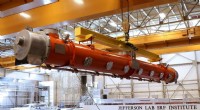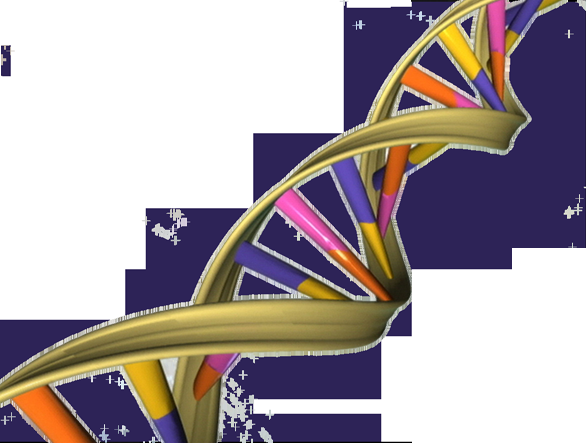
Wetenschap
Hoe de NQISRC's de kwantumrevolutie benutten

Tegoed:CC0 Publiek Domein
Hoewel ze hun eigen unieke expertisegebieden en middelen hebben, zijn de NQISRC's allemaal afgestemd op dezelfde missie:de vooruitgang van de kwantuminformatiewetenschap.
Vijf National Quantum Information Science Research Centres (NQISRC's) maken op de kleinste schaal gebruik van het gedrag van de natuur om technologieën te ontwikkelen voor de meest complexe problemen van de wetenschap. Ondersteund door het U.S. Department of Energy (DOE) Office of Science, ondersteunen de NQISRC's sinds 2020 de missie van DOE om de energie-, economische en nationale veiligheid van de Verenigde Staten te bevorderen. Door een nationaal kwantumecosysteem te bouwen en een personeelsbestand bestaande uit onderzoekers van ongeveer 70 instellingen in de Verenigde Staten, creëren de centra een rijke omgeving voor kwantuminnovatie en co-design.
De NQISRC's integreren state-of-the-art DOE-faciliteiten, vooraanstaande talenten in nationale laboratoria en Amerikaanse universiteiten, en de ondernemende vindingrijkheid van Amerikaanse technologiebedrijven.
Als gevolg hiervan verleggen de centra de grenzen van wat mogelijk is in kwantumcomputers, sensoren, apparaten, materialen en nog veel meer.
Elk nationaal centrum wordt geleid door een nationaal DOE-laboratorium:
- Co-designcentrum voor kwantumvoordeel (C 2 QA), geleid door Brookhaven National Laboratory
- Q-NEXT, geleid door Argonne National Laboratory
- Quantum Science Center (QSC), geleid door Oak Ridge National Laboratory
- Quantum Systems Accelerator (QSA), geleid door Lawrence Berkeley National Laboratory
- Supergeleidend Quantum Materials and Systems Center (SQMS), geleid door Fermi National Accelerator Laboratory
Leidinggevend met de wetenschap
"Elk centrum is op zichzelf een formidabele kracht voor de kwantuminformatiewetenschap en verlegt de grenzen van informatica, natuurkunde, scheikunde en materiaalwetenschap om transformationele nieuwe technologieën naar de natie te brengen", zegt Q-NEXT-directeur David Awschalom. "Maar samen zijn ze een nationale krachtpatser, die de kwantumwetenschap en -engineering naar een bijzondere bekendheid verheft in de VS en het land positioneert als een wereldleider in het veld."
Een snel opkomend onderzoeksgebied, kwantuminformatiewetenschap (QIS) onderzoekt de kwantumeigenschappen van de natuur om nieuwe, krachtige manieren te ontwikkelen om informatie te verwerken op uiteenlopende gebieden als geneeskunde, energie en financiën. Door de meest fundamentele eigenschappen van de materie te manipuleren, zouden onderzoekers nieuwe sensoren met ongekende precisie, krachtige computers en veilige communicatienetwerken kunnen uitvinden.
Daartoe werken de centra aan het prototypen en evalueren van de prestaties en impact van kwantumcomputers en sensoren die zijn gebouwd met behulp van verschillende technologische platforms en architecturen.
"Er zijn veel keuzes en mogelijkheden die gemaakt moeten worden bij de ontwikkeling van kwantumcomputing, en als we begrijpen hoe de huidige apparaten falen, zien we de weg vooruit", zegt C 2 QA-directeur Andrew Houck. "De NQISRC's kunnen deze verrassend zware taak aan omdat, ondanks grote vooruitgang in het veld, de huidige kwantumcomputers nog steeds te veel lawaai maken en gevoelig zijn voor fouten voor bruikbare berekeningen."
Het begrijpen van het kwantumgedrag van materialen is cruciaal voor het overwinnen van deze geluidsbeperkingen en voor het realiseren van apparaten die een kwantumvoordeel zullen bieden. De nationale laboratoria bevinden zich in een unieke positie om geavanceerde faciliteiten en kennis te bieden die leiden tot het begrijpen en overwinnen van deze beperkingen.
"DOE heeft jarenlang geïnvesteerd in geavanceerde technologieën, tools en faciliteiten in nationale laboratoria, die unieke kansen bieden om een sprong in de prestaties van kwantumapparaten mogelijk te maken", zegt SQMS-directeur Anna Grasselino. "We zijn verheugd om toonaangevende expertise aan te bieden om transformationele vooruitgang te boeken in QIS, vooral omdat QIS kan helpen onze missie om de wereld op het meest fundamentele niveau te begrijpen."
Samenwerken voor kwantuminnovatie
De interdisciplinaire teams van de NQISRC's co-ontwerpen kwantumtechnologieën om de weg vrij te maken voor toekomstige wetenschappelijke ontdekkingen. Advances in QIS will bring about societywide benefits, such as new materials and powerful quantum sensors that, when combined with medical imagers, could measure tissue at the individual-cell level, bringing far greater sensitivity to today's magnetic resonance imaging machines.
By understanding what enables and limits different quantum technologies and what tools need to be developed, the co-design effort across the NQISRCs could translate into faster drug and vaccine development, novel materials, improvements in transportation and logistics, and more secure financial networks.
As a national ecosystem, NQISRC researchers leverage world-class DOE Office of Science user facilities and programs, such as the Advanced Photon Source at Argonne National Laboratory, the Oak Ridge Leadership Computing Facility at Oak Ridge National Laboratory, the Advanced Light Source at Lawrence Berkeley National Laboratory, the National Synchrotron Light Source II at Brookhaven National Laboratory, and the superconducting technology facilities and technologies at Fermilab.
"Through the funding of these strategic quantum centers, DOE has given researchers an incredible opportunity to make impactful and world-changing discoveries in QIS," said QSC Director Travis Humble. "Based on the first two years of operation, there is every reason to believe these centers will make tremendous progress in the coming years in advancing QIS toward real-world innovation. We will see an increasing flow of discovery science through the innovation chain."
Similarly, laboratory and university scientists can leverage the market-driven technologies developed by their industry partners, such as test beds and simulation tools. Capitalizing on these networks, each center builds a pathway to commercializing quantum technologies and, eventually, bringing them to the public.
Preparing the quantum workforce and engaging with industry
The lasting impact of the NQISRCs' co-design efforts for science and technology will depend on a quantum workforce to carry it into the future. All national centers are committed to building a workforce with a focus on diversity, equity and inclusion through institutional degree programs, cooperative training programs with industry and retraining certificate programs. This sets the stage for many more innovations and fundamental science questions to be explored.
"The centers have taken a multipronged approach to train the next generation of QIS scientists and researchers and to create new pipelines for underrepresented groups," expressed QSA Director Irfan Siddiqi. "We're all putting forth special efforts to support a diverse quantum workforce in a fast-growing field."
The QSC at Oak Ridge National Laboratory, for example, held its second annual quantum summer school in May, a forum for sharing QIS topics with high schoolers, college students, postdocs and professionals. The event included panels on workforce development strategies with leading industry representatives as well as networking opportunities for students and staff.
C 2 QA recently held its second six-weeklong quantum computing summer school, QIS101, for undergraduate students this year, with a focus on building fundamental and practical skills and growing a diverse quantum workforce. 40% of the participants in C 2 QA's summer session were women, and nearly 44% were from communities underrepresented in QIS.
Q-NEXT partners with other quantum institutions to build a more diverse and inclusive quantum workforce through the Open Quantum Initiative, a group led by the Chicago Quantum Exchange. One key effort was the creation of an undergraduate fellowship program for underrepresented, racially minoritized quantum scientists. This summer, the fellowship participants worked side-by-side with scientists at collaborating institutions on challenging projects in QIS.
QSA works closely with several regional and international companies with strong records in diversity and inclusion programs. Furthermore, it is partnering with local economic development boards already active in the industry to establish internship and apprenticeship programs and accelerate startups. QSA hosted in 2021 its industry and investor roundtable events, attended by dozens of founders, investors, CEOs, senior scientists and engineers from across the United States and worldwide.
SQMS has announced the recipient of the first Carolyn B. Parker Fellowship, named for Carolyn Beatrice Parker, who was the first African American woman to earn a Ph.D. in physics. The center is currently recruiting for a second Parker fellow and is wrapping up the second annual undergraduate internship program as well as the SQMS QIS Summer School, co-hosted by the Galileo Galilei Institute in Florence, Italy.
On Sept. 14, Brookhaven National Laboratory will host the second NQISRC Virtual Quantum Career Fair. The event aims to make undergraduate, graduate and postdoc communities more aware of the DOE Office of Science's NQISRCs and the different types of careers in QIS at the centers—from technical to non-STEM careers. The first NQISRC career fair, held in fall 2021, attracted close to 400 participants, with 12% representation from minority-serving institutions.
Advances in quantum information science have the potential to revolutionize research and society. The NQISRCs are at the forefront of this emerging field by developing technologies that go beyond what's previously possible. + Verder verkennen
Importance of the science of measurement in the quantum revolution
 Mollen berekenen in een reactie
Mollen berekenen in een reactie Schrijven met licht op titanium:herschrijfbare UV-gevoelige oppervlakken gemaakt van gedoteerde TiO2-nanokristallen
Schrijven met licht op titanium:herschrijfbare UV-gevoelige oppervlakken gemaakt van gedoteerde TiO2-nanokristallen Onderzoekers produceren alle RNA-nucleobasen in gesimuleerde oeraardse omstandigheden
Onderzoekers produceren alle RNA-nucleobasen in gesimuleerde oeraardse omstandigheden Kruizende lichtstralen sleutel in transformatieve 3D-printerpotentieel
Kruizende lichtstralen sleutel in transformatieve 3D-printerpotentieel
Berekening van het percentage terugwinning van een product
 Koolstof uit de lucht halen
Koolstof uit de lucht halen Mineralen in vulkanisch gesteente bieden nieuwe inzichten in de eerste 1,5 miljard jaar van de evolutie van de aarde
Mineralen in vulkanisch gesteente bieden nieuwe inzichten in de eerste 1,5 miljard jaar van de evolutie van de aarde Hittegolf grijpt het westen van de VS te midden van angst voor een nieuwe, heter normaal
Hittegolf grijpt het westen van de VS te midden van angst voor een nieuwe, heter normaal EU stemt ermee in de meeste plastics voor eenmalig gebruik te verbieden
EU stemt ermee in de meeste plastics voor eenmalig gebruik te verbieden Nieuw onderzoek ondersteunt verbeterde vertalingen van weersvoorspellingen voor Spaanstaligen in de VS
Nieuw onderzoek ondersteunt verbeterde vertalingen van weersvoorspellingen voor Spaanstaligen in de VS
Hoofdlijnen
- Wat zit er in je tarwe? Wetenschappers voegen het genoom van de meest voorkomende broodtarwe samen
- De verbazingwekkende efficiëntie van het leven
- Insecten kunnen mensen leren omgaan met tegenslag
- Graafwespen en hun chemie
- Een RNA TREAT voor Halloween
- Wetenschappers brengen nieuwe inzichten in de erfelijkheid van de ernst van de hiv-infectie
- Hoe DNA te maken met pijpreinigers & pony kralen
- Antibiotica in actie zien in een pathogene bacterie
- Studie vertelt over pompoenkleurige zombies
- Lasers op zonne-energie naar nieuwe hoogten tillen met pompen met vier spiegels

- Microjets zijn sneller dan een snelheidskogel

- Accelerator maakt een langlauftocht om laserupgrade mogelijk te maken

- Video:De nieuwe Large Hadron Collider-schoonheid VELO

- Chemische ingenieurs ontdekken hoe ze knopen kunnen beheersen die zich in DNA-moleculen vormen

 Curiosity rover-team onderzoekt nieuwe onderbreking van de boor
Curiosity rover-team onderzoekt nieuwe onderbreking van de boor Waarnemingen identificeren drie verschillende activiteitsperioden in de quasar 3C 279
Waarnemingen identificeren drie verschillende activiteitsperioden in de quasar 3C 279 De verborgen dreiging van het thuiskantoor
De verborgen dreiging van het thuiskantoor Kankerbestrijdende nanorobots die zijn geprogrammeerd om tumoren te zoeken en te vernietigen
Kankerbestrijdende nanorobots die zijn geprogrammeerd om tumoren te zoeken en te vernietigen Wetenschappers:risico op explosieve uitbarsting stijgt voor vulkaan Hawaï
Wetenschappers:risico op explosieve uitbarsting stijgt voor vulkaan Hawaï Welvarende landen hebben handel nodig om milieuproblemen te verminderen
Welvarende landen hebben handel nodig om milieuproblemen te verminderen Thermokoppelstoring Oorzaken
Thermokoppelstoring Oorzaken  Hubble-ruimtetelescoop gerepareerd na maand zonder wetenschap
Hubble-ruimtetelescoop gerepareerd na maand zonder wetenschap
- Elektronica
- Biologie
- Zonsverduistering
- Wiskunde
- French | Italian | Spanish | Portuguese | Swedish | German | Dutch | Danish | Norway |

-
Wetenschap © https://nl.scienceaq.com

